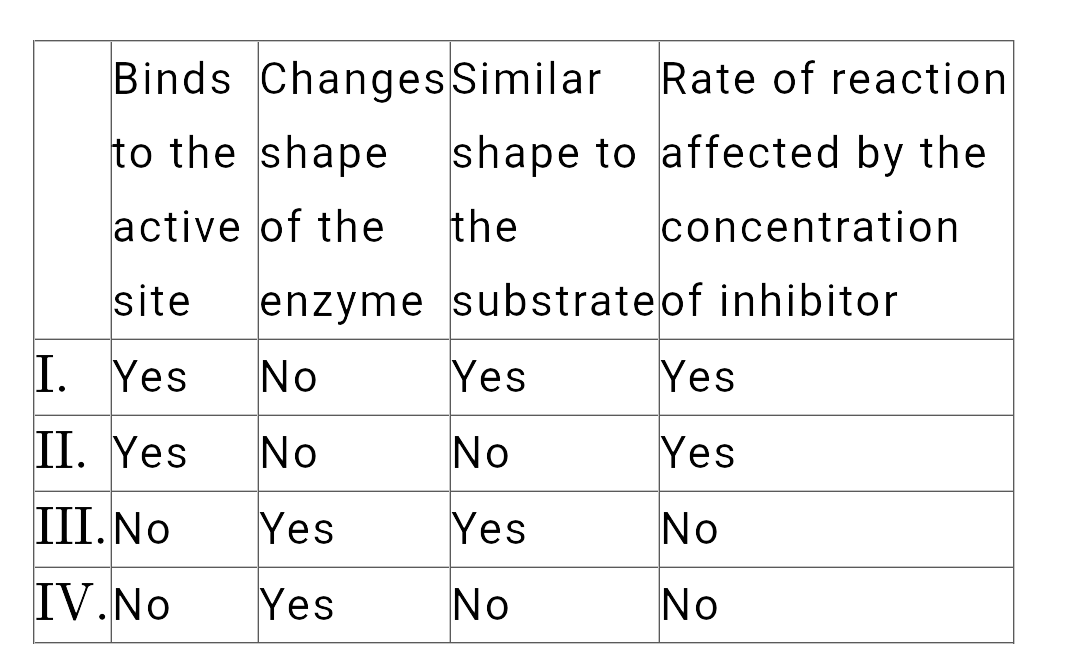First step of an enzyme - catalyzed reaction is
Enzyme breaks the chemical bond of substrate
Enzyme releases the products of the reaction
The substrate binds to the active site of the enzyme , fitting into the active site
Active site reacts with substrate forming enzyme product complex
The correct Answer is:C
To solve the question regarding the first step of an enzyme-catalyzed reaction, we can break it down into a series of logical steps:
1. Understanding Enzymes: Enzymes are biological catalysts that speed up chemical reactions in living organisms. They are crucial for various biochemical processes.
2. Enzyme-Substrate Interaction: The first step in an enzyme-catalyzed reaction involves the interaction between the enzyme and its substrate. This is a critical initial phase where the enzyme recognizes and binds to the substrate.
3. Binding to Active Site: The substrate specifically binds to the active site of the enzyme. The active site is a unique region on the enzyme that is complementary in shape to the substrate, allowing for a precise fit.
4. Formation of Enzyme-Substrate Complex: Once the substrate binds to the active site, an enzyme-substrate complex is formed. This complex is essential for the subsequent steps of the reaction.
5. Breaking of Bonds: After the enzyme-substrate complex is formed, the enzyme facilitates the breaking of bonds within the substrate, leading to the formation of products.
6. Release of Products: Finally, the products of the reaction are released, and the enzyme is free to catalyze another reaction.
Conclusion:
The first step of an enzyme-catalyzed reaction is when the substrate binds to the active site of the enzyme.
Answer:
The correct answer is: The substrate binds to the active site of the enzyme.
---
The first step of an enzyme-catalyzed reaction is when the substrate binds to the active site of the enzyme.
The correct answer is: The substrate binds to the active site of the enzyme.
Similar Questions
How does the rate of an enzyme-catalyzed reactions vary with (a) temprature and (b) pH? Represent diagrammatically.
View SolutionAt what PH range the rate of enzyme catalyzed reaction is maximum ?
View SolutionSelect the option with features that are applicable for a competitive inhibitor of an enzyme - catalyzed reaction .
 View Solution
View SolutionWhich of the following options represents correct set of steps for an enzyme catalysed reaction
View SolutionEnzymes catalyse reactions by
View SolutionThe efficieny of an enzyme in catalyzing a reaction is due to its capacity
View SolutionThe half life of a substance in a certain enzyme catalyzed reaction is 138s. The time required for the concentration of the substance to fall from 1.28mgL−1→0.04mgL−1 :
View SolutionProduct obtained after First step of above mentioned reaction is:
 View Solution
View SolutionFirst step of taxonomy is
View SolutionConsider the following
1. Succinic dehydrogenase
2. Aconitase
3. α-ketoglutarate dehydrogenase
4. lsocitric dehydrogenase
What is the correct order in which the above enzymes catalyze the reaction in Kreb's cycle?View Solution

